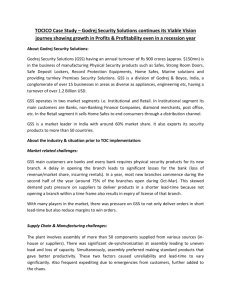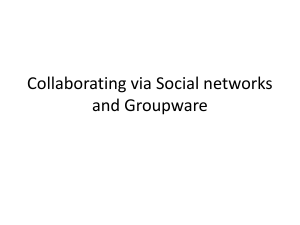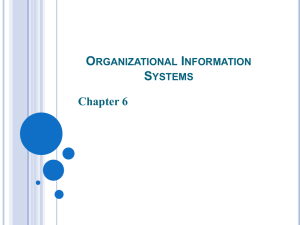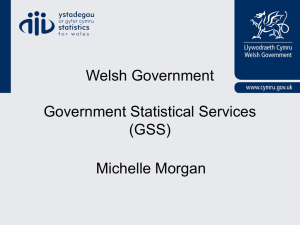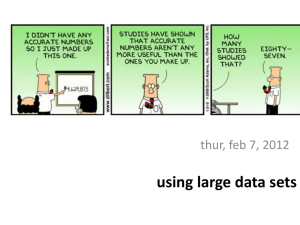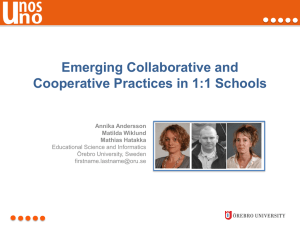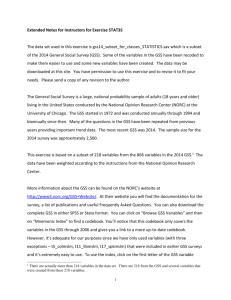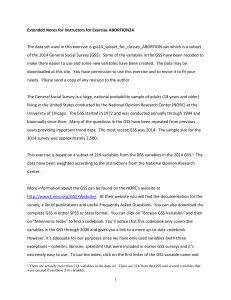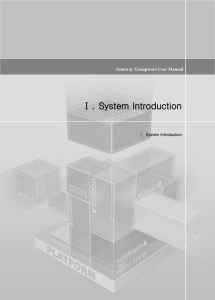File - EWU-MIS
advertisement
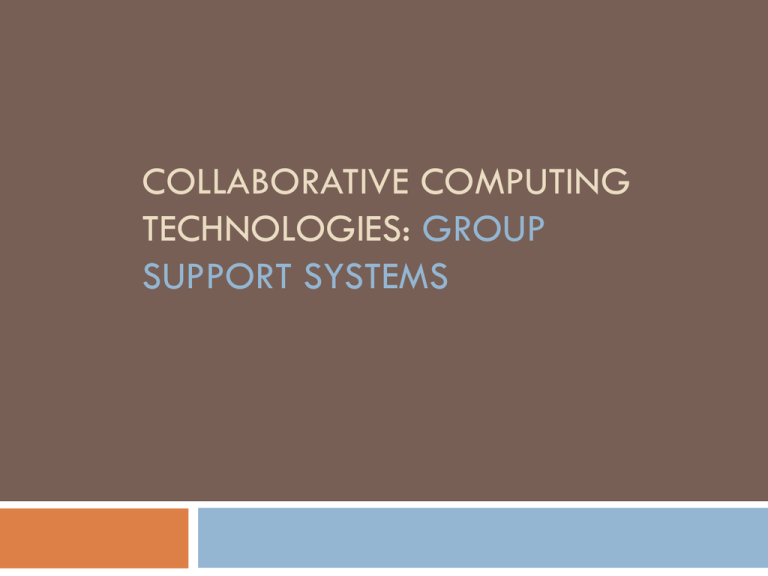
COLLABORATIVE COMPUTING TECHNOLOGIES: GROUP SUPPORT SYSTEMS Learning Objectives Understand concepts and fundamentals of groupwork, communications, and collaboration. Examine how computer systems enhance communication and collaboration. Understand the principles and capabilities of GSS. Explore the concepts of time/place frameworks. Learn how GSS interplays with the concepts of process gain and loss, and task gain and loss. Understand the fundamentals of electronic meetings. Examine GSS’ three technologies. Learn how the Web enables GSS, electronic meetings, and collaborative computing. Explain hoe distance learning is enabled by GSS. Show how GSS enhances creativity. Collaborative Design at Boeing-Rocketdyne Problem Drive the cost of rocket engine down 95% Get the engine to market 10 time faster Require radical new design, significant creativity, and unusual innovation Solution Created expert team from business partner Used collaborative technology Internal Notebook : Members could access the software securely from anywhere. Could create, comment on, reference-link, search, and short-entries also use electronic whiteboard that allowed multiple team members near-instance access. Cont………. Collaborative Design at Boeing-Rocketdyne Solution Project Vault : A software allowed secured common file storage and transfer of these files on as-needed basis. Software tools and protocol were modified and allowed which allowed face-to-face meeting, content was posted online for group sharing. Major tools used to support the lengthy virtual meetings by teleconferencing and videoconferencing. Used powerful desktop analysis software to analyse designs during the meeting, so results could be discussed in real-time and evaluted through brainstorming. Collaborative Design at Boeing-Rocketdyne Result Designed a product made of 6 parts instead of normal 1200 Cost $0.5 million from $14 million Quality level 9 sigma from 2-6 sigma Team did all this in 10 months instead of 6 years Production cost $47,000 instead of $4.5 million and with more than a 5 percent reduction in total engineering hours. Making decisions in Groups : Characteristics Groupwork Work done by two or more people together. Members can be located in different places and work at different times Information may be located external to the project Allows for rapid solutions May exhibit normal team problems of synergy or conflict Often Internet based Groupware tools support groupwork Work called computer-supported cooperative work Group Decision-Making Process Even in hierarchical organizations, decision making is usually a shared process. The following activities and process characterize meetings: The decision situation is important, so it is advisable to make it in a group in a meeting Joint activity Outcome of the meeting depends partly on the knowledge, opinions, judgement and composition of its participants. Differences in opinion are settled either by the ranking person, or through negotiation or arbitration. They can be virtual team May be beneficial or dissatisfaction Benefits and limitation of group work Process gains are the benefit of working in group It provides learning. Groups are better than individuals at understanding problems People readily take ownership and responsibility Group members have their egos embedded in the decision Groups are better than individuals at catching errors A group has more information A group may produce synergy Working in group may stimulate the creativity A group may have better and more precise communication working together Risk propensity is balanced Benefits and limitation of group work Dysfunction may occur Process loss Social pressure of conformity may result in groupthink It’s a time consuming, slow process, costly There can be lack of coordination of the meeting and poor meeting planning Inappropriate influence Some members may afraid to speak up Can be compromised solutions of poor quality Too much information Incomplete, incorrect and inappropriate Improving the meeting Process Researchers have developed methods for improving the process of group work; that is, increasing some of the benefits of meeting and eliminating of reducing some of the losses. Two representative methods Delphi method : is a qualitative forecasting methodology that uses anonymous questionnaires. Nominal group thinking : is a simple brainstorming process for non-electronic meeting. Qualitative Methods of Forecasting HR Demand or Supply Method Delphi technique Delphi Description Advantages • A group of experts • Can involve key exchanges several rounds decision makers in of estimates of HR process. demand or supply, • Can focus on what is normally without meeting expected or desired in face to face. Feedback future. from other experts is used by each individual to • Not bound to the past. “fine-tune” his or her independent estimate. • A small group of experts • Same as for Delphi meets face to face. After a technique. NGTNominal procedure that involves • Group discussions open discussion and group facilitate private assessments, the can technique group reaches a judgment exchange of ideas and concerning future HR greater acceptance of results by demand or supply. participants. Disadvantages • Highly subjective. • Judgments may not efficiently use objective data. • Same as for Delphi technique. • Group pressure may lead to less accurate assessments that could be obtained through other means. Supporting group-work with computerized systems Almost all dynamic organizations using some computerbased communication and collaboration methods and tools to support people working in teams or group. An overview of GSS Common group activities with computer assistance Information retrieval Information sharing Information use Support participants Improve productivity and effectiveness of meetings More efficient decision-making Increase effectiveness of decisions Computers have been used for several decades to facilitate group-work and group decision making, lately, collaborative tools have received even greater attention due to their increased capabilities and ability to save money. Groupware Software providing collaborative support to groups Different time/place applications Most use Internet technologies Most offer one or more capabilities Electronic brainstorming Free flow of ideas and comments Electronic conferencing or videoconferencing Group scheduling and calendars Conflict resolution Model building Electronic document sharing Voting services Electronic meeting services also available Enterprise-wide systems expensive in cost and human resources Popular Groupware Groupware products provides a way for group to share resources and opinions. Groupware implies the use of networks to connect people. Lotus Notes/Domino Microsoft Netmeeting Groove Workspace GroupSystems MeetingRoom and OnLine WebEx Time/Place Communication Framework Effectiveness of collaborative group depends on Time synchronous or asynchronous transmission of information Place location of participants Benefits and Problems Benefits of groupwork Process gains Nominal group technique Delphi method Technology applied as GSS Hardware and software combined to enhance group Collaborative computing Problems in groupwork Process losses inefficient GSS Technology Deployment Special purpose decision room Electronic meeting rooms Software operates across LAN Allowed for face-to-face meetings Trained facilitator coordinates meeting Group leader structures meeting with facilitator Multiple use facility General purpose computer lab Effective way to lower costs Trained facilitator coordinates meeting Group leader structures meeting with facilitator Web-based groupware with clients Anytime/anyplace meetings with deadlines established Software bought or leased No facility costs Flexible Tools for indirect support of Decision Making A large number of tools and methodologies are available to facilitate e-collaboration, communication, and decision support. Synchronous Products: communication and collaboration are done in real-time. IM VoIP Asynchronous Products : communication and collaboration done by the participants at different times. E-mail Wikilogs Online workplace Cont… Tools for indirect support of Decision Making Virtual Meeting Systems : The advancement of web systems opens the door for improved , electronically supported virtual meetings. VM are supported by a variety of groupware tools. Electronic Teleconferencing Video conferencing Web conferencing Interactive whiteboards Screen sharing Instant video GSS Meeting Process Group leader meets with facilitator to plan meeting structure. Participants meet on computers. Group leader or facilitator poses question. Participants brainstorm by entering comments into computer. Facilitator employs idea organization software to sort comments into common themes. Results are displayed. Facilitator or group leader leads discussion. Themes are prioritized. Highest priority topics are either sent through the process again for further discussion or a vote is taken. GSS Meeting Process Standard Process Exploratory idea generation Idea organization tool Prioritization New idea generation Selection of final idea Success based upon effectiveness, reduction in costs, better decisions, increased productivity GSS and Distance Education Classroom collaborative computing advantages Brainstorming, chat, discussion boards Distribution of information, lectures Publishes to course site Videoconferenced Consistent materials Textbooks can be bound or electronic E-mails and listservs One-on-one interaction Allows for global classrooms Anytime/anyplace with fixed deadlines Flexible time frame Doesn’t interfere with work shift Low delivery costs with large audiences GSS and Distance Education, continued Disadvantages: Fewer social interactions Communication problems Students must be self-starters and highly disciplined Classes require major technical and administrative support Technical infrastructure must be reliable Courses may need to be redesigned for online Special training Corporate training online: Allows anytime/anyplace training Lowers costs Decreases time away from jobs Shortens learning process Delivered via Intranet, intranets, extranets, audio and video conferencing Creativity Support System Creativity Fundamental human trait Level of achievement Can be learned Organizations recognize value in innovation Stimulated by electronic brainstorming software Free flow idea generation Creative computer programs Smartbots function as facilitators Identify analogies in letter patterns Draw art Write poems Computer programs stimulate human productivity

